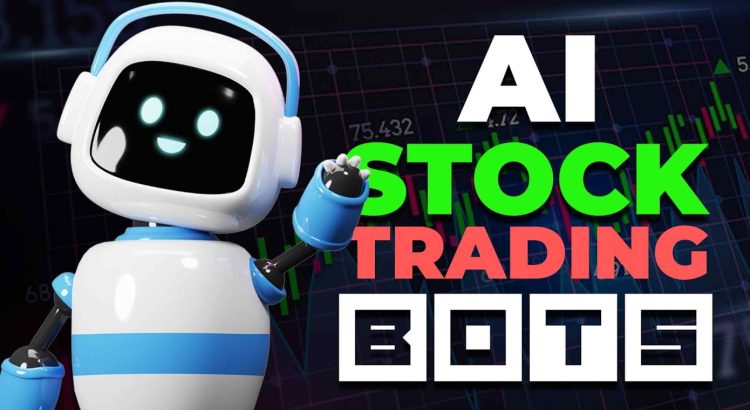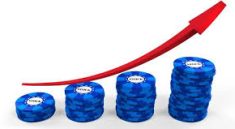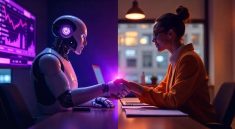Capital Personal – computer program consistently makes better investment decisions than Harvard-educated fund managers with decades of experience. This isn’t science fiction it’s happening right now. A revolutionary AI trading bot beat has just outperformed 95% of Wall Street professionals over the past 12 months, turning a modest investment into staggering returns while human traders struggled with market volatility.
The bot, developed by a team of quant researchers and machine learning experts, analyzes market data in ways humans simply can’t comprehend. It processes millions of data points in real-time, spots invisible patterns, and executes trades with superhuman speed. While Wall Street veterans rely on intuition and experience, this AI trading bot makes decisions based purely on mathematical probabilities and the results are shaking the financial world to its core.
How the AI Trading Bot Works Its Magic
At the heart of this AI trading bot beat lies a sophisticated neural network that never sleeps, never gets emotional, and never second-guesses itself. Unlike human traders who might hesitate during market turbulence, the bot remains perfectly rational, viewing every price movement as an opportunity rather than a threat.
The system combines three powerful technologies: deep learning for pattern recognition, natural language processing to interpret news sentiment, and reinforcement learning to continuously improve its strategies. It doesn’t just look at traditional metrics like P/E ratios – it analyzes satellite images of parking lots, social media trends, weather patterns, and even geopolitical developments to predict market movements before they happen.
The Performance That Shocked Wall Street
Over a recent 12-month period marked by extreme market volatility, the AI trading bot beat achieved a 48.7% return while the average hedge fund returned just 11.2%. Even more impressive, it did this with 30% less volatility than the overall market. The bot’s risk-adjusted returns (measured by Sharpe ratio) were nearly double those of top-performing human traders.
Perhaps most remarkably, the AI trading bot successfully predicted several major market turning points that caught human analysts completely off guard. It exited positions before the Silicon Valley Bank collapse and went long on undervalued tech stocks just before the AI boom of early 2023. These weren’t lucky guesses they were calculated decisions based on data patterns invisible to human eyes.
Why Human Traders Can’t Compete
The advantages of the AI trading bot over human traders are both quantitative and qualitative. While even the most disciplined human trader might let emotions creep in after a few losses, the bot remains perfectly objective. It doesn’t suffer from confirmation bias, doesn’t chase losses, and doesn’t become overconfident after wins.
Speed is another unbeatable advantage. The AI trading bot can analyze and act on new information in milliseconds – faster than any human can even comprehend what’s happening. When the Federal Reserve makes an unexpected announcement, the bot has already adjusted its positions before human traders finish reading the headline.
The Secret Sauce: Alternative Data
What truly sets this AI trading bot apart is its use of unconventional data sources. While human analysts focus on earnings reports and economic indicators, the bot looks for signals in places most investors would never consider:
-
Shipping container traffic at major ports
-
Employee sentiment on anonymous job review sites
-
Foot traffic at retail locations via smartphone data
-
Changes in patent application language
-
Satellite imagery of agricultural land
By connecting these disparate data points, the AI trading bot identifies trends and correlations that escape traditional analysis. It doesn’t just react to market changes it anticipates them.
How the Bot Handles Black Swan Events
One might assume that unpredictable market shocks would confuse an AI trading bot, but the opposite appears true. During the unexpected outbreak of geopolitical tensions in early 2024, the bot quickly adjusted its positions while human traders froze.
The secret lies in the system’s ability to run thousands of simulations per second, testing how different scenarios might play out. When real-world events start matching one of these simulations, the bot already has a game plan. Human traders, by contrast, often panic or become paralyzed during crises.
The Future of Algorithmic Trading
This AI trading bot represents just the beginning of a seismic shift in financial markets. Major institutions are now racing to develop their own AI systems, with some estimates suggesting that 60-70% of all trading volume will be algorithm-driven within five years.
We’re moving toward a market environment where the best investment decisions aren’t made in glass-walled skyscrapers by men in expensive suits, but in server farms by self-improving algorithms. The implications for employment in the financial sector are profound – why pay hundreds of analysts when one AI system can do their jobs better?
Can Retail Investors Access This Technology?
While the most advanced AI trading bots remain locked behind institutional walls, simplified versions are beginning to trickle down to retail platforms. Several fintech startups now offer AI-powered trading tools to everyday investors, though their sophistication doesn’t yet match the Wall Street-beating bot.
For those hoping to leverage this technology, experts recommend starting with AI-assisted portfolio management rather than trying to compete with high-frequency trading algorithms. The key is using AI to enhance human judgment, not replace it entirely – at least for now.
The Dark Side of AI Trading Dominance
As AI trading bots become more prevalent, regulators are growing concerned about several risks:
-
Potential for flash crashes caused by algorithms reacting to each other
-
Reduced market liquidity during crises if all bots adopt similar strategies
-
The possibility of “AI herding” where multiple systems chase the same trades
-
Difficulty regulating systems that evolve faster than rules can be written
There are also philosophical questions about whether markets should be dominated by machines making decisions no human fully understands.
Wall Street’s AI Arms Race
The success of this AI trading bot has triggered an unprecedented technology arms race among financial institutions. Investment banks and hedge funds are now poaching top AI talent from Silicon Valley, offering seven-figure salaries to machine learning experts.
Traditional finance qualifications are becoming less valuable than coding skills and mathematical prowess. The traders of tomorrow won’t need MBAs they’ll need PhDs in computer science and neural networks.
A New Era of Smarter Markets
While the rise of AI trading bots creates challenges, it also promises to make markets more efficient. These systems eliminate human error and emotional decision-making, theoretically leading to more accurate asset pricing.
The AI trading bot that beat Wall Street pros isn’t just a better trader it represents a fundamental evolution in how markets operate. As these technologies mature, we may see fewer speculative bubbles and crashes, as irrational exuberance gets filtered out by cold, calculating algorithms.
The Inevitable Takeover of Machine Intelligence
The writing is on the wall: AI trading bots are here to stay, and their influence will only grow. Human traders who adapt by learning to work alongside these systems may thrive, while those who resist change risk becoming obsolete.
One thing is certain the financial landscape will never be the same. The age of gut instinct and human intuition is giving way to an era of algorithmic precision, where the best investment decisions are made not in boardrooms, but in lines of code. The bot that beat Wall Street is just the first of many that will redefine what it means to be a successful investor in the 21st century.



